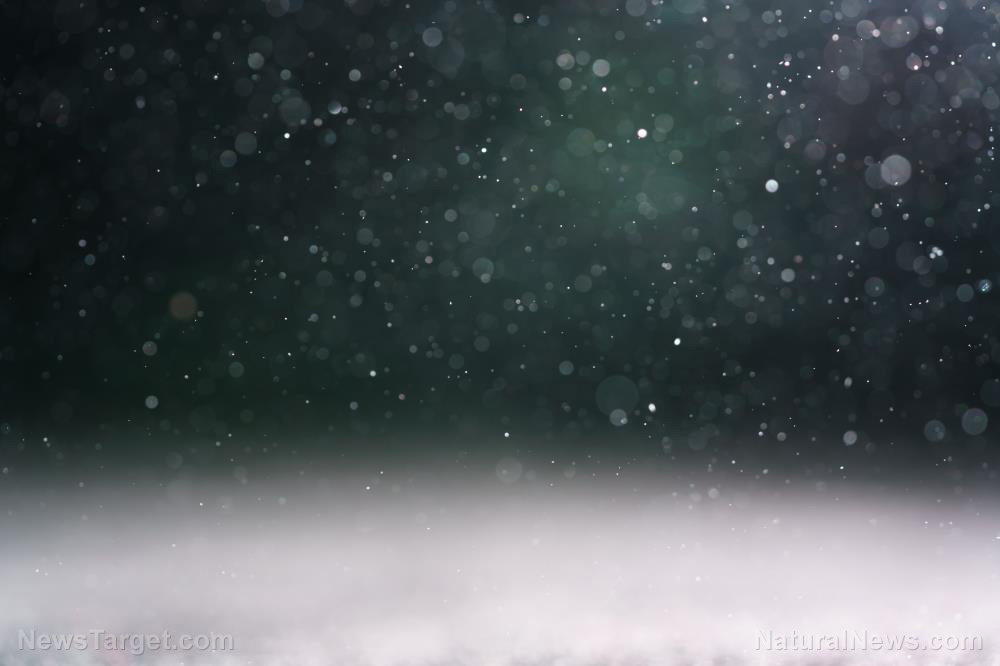 Parler
Parler Gab
Gab
- A Saharan dust plume larger than the continental U.S. is advancing toward Florida’s Gulf Coast, arriving earlier and more intensely than usual.
- Health experts warn of respiratory risks due to PM2.5 particles, urging vulnerable populations to limit outdoor activity.
- Satellite data shows the plume spanning 2,000 miles across the Caribbean, with air quality alerts issued in Puerto Rico and the Turks and Caicos.
- Canadian wildfire smoke may intersect with the dust in the Southeast, worsening air quality and pollution.
- Residents are advised to stay indoors, use N95 masks and monitor real-time air quality updates to mitigate exposure.
Health hazards loom amid air quality concerns
The dust’s fine particles, known as PM2.5, pose significant risks to respiratory health. These microscopic particles can infiltrate deep into lung tissue, exacerbating asthma, allergies and chronic obstructive pulmonary disease (COPD). Puerto Rico’s Health Department has already warned residents to avoid prolonged outdoor activity, especially for children, elderly individuals and those with compromised immune systems. As the plume drifts toward the mainland, health agencies in Florida, Alabama, Louisiana and Mississippi brace for similar advisories. The timing couldn’t be worse: residual smoke from Canadian wildfires already clouds the eastern U.S., creating a potential overlap of two airborne threats. “Wildfire smoke and dust particles both contain PM2.5, which means their combined effect could push pollution levels into dangerous territory,” DaSilva explained. Minneapolis recently recorded “very unhealthy” air quality due to wildfire haze.A stormy sky, choking air: Dust cloud threatens southern states
While Saharan dust plumes are a seasonal occurrence between April and October, experts note a rising frequency and intensity of these events. The 2020 “Godzilla” plume, the largest in 50 years, caused visibility to plummet and air quality alerts to ring from Texas to the Carolinas. In July 2023, another plume turned skies orange over the Gulf Coast. This year’s plume, arriving earlier and denser than previously observed, may signal altered atmospheric patterns linked to climate variability. The SAL’s dry air suppresses hurricane formation by reducing tropical moisture—a natural regulator of Atlantic cyclones. Yet its health and environmental consequences are increasingly prominent. “We’re learning that these dust clouds aren’t just a curiosity,” Prospero said. “As human populations grow and environmental stressors mount, the interplay between natural phenomena and human health demands urgent attention.”Preparedness measures and the new era of atmospheric challenges
Residents in affected areas should prepare for hazy skies, dust residue on surfaces and vivid sunsets — a visual spectacle with health trade-offs. Officials recommend:- Monitoring real-time air quality indexes via platforms like AirNow.
- Remaining indoors during peak exposure hours, particularly between 10 a.m. and 3 p.m.
- Using HEPA air filters and N95 masks when venturing outside.
A future defined by atmospheric crossroads
The dust plume underscores humanity’s vulnerability to planetary-scale atmospheric shifts. “This isn’t just about Florida or even the U.S. — it’s a reminder of nature’s interconnectedness,” Prospero said. As environmental events and persistent pollutants collide, proactive measures — from stricter air quality monitoring to stronger infrastructure — are critical to safeguarding public health. For now, residents in the path of this 2,000-mile dust cloud must rely on science, preparation and a watchful eye on the sky. Sources for this article include: YourNews.com NaturalNews.com DailyMail.comFBI Director Kash Patel warns of China’s long-term plan to “kneecap” the U.S. through FENTANYL
By Ramon Tomey // Share
Israel and Jordan intercept Iranian drones amid escalating tensions
By Belle Carter // Share
China sends two aircraft carriers to the Pacific, signaling growing naval ambitions
By Belle Carter // Share
Salmonella outbreak triggers recall of millions of EGGS
By Ramon Tomey // Share
Chinese researcher arrested for SMUGGLING biological materials into the country
By Ramon Tomey // Share
The hidden dangers of VP/VA copolymer in cosmetics and personal care products
By Zoey Sky // Share
Governments continue to obscure COVID-19 vaccine data amid rising concerns over excess deaths
By patricklewis // Share
Tech giant Microsoft backs EXTINCTION with its support of carbon capture programs
By ramontomeydw // Share
Germany to resume arms exports to Israel despite repeated ceasefire violations
By isabelle // Share









